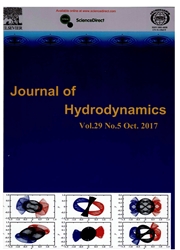

 中文摘要:
中文摘要:
该文提出了采用波状前缘机翼改善动态失速性能的有效控制方式。通过数值求解雷诺平均N-S方程,对比研究了波状前缘机翼和传统的光滑前缘机翼在动态失速时的力学性能和流动特征,并分析了前缘形状改进和可控拍动参数的影响,探讨有效的控制途径。研究结果表明,在深失速的动态失速控制中,波状前缘翼的复杂涡系能更稳定地附着在上翼面,其力学性能明显优于光滑前缘翼,尤其在大攻角范围内优势明显。波状前缘形状改变对升力能几乎没有影响,但转轴前移、增加拍幅和频率都能提高拍动波状前缘翼的升力。
 英文摘要:
英文摘要:
An effective way to improve the aerodynamic performance in dynamic stall by applying the leading edge modification on the wing was proposed in this paper. The study was based on solving the Reynolds-averaged Navier-Stokes equations. The differences of mechanic performance and flow mechanism between the wavy leading-edge wing and the traditional baseline wing were discussed. In addition, the shape of leading-edge modification and controllable factors of flapping motion were also analyzed. The results indicate that the complex vorticies on the wavy leading-edge wings are more stable attaching on the upper surface of the wing, which leads to higher performance than the counterparts, especially in the range of high angles of attack. Moving rotating axis forward, enlarging the amplitude and frequency of flapping motion can increase the lift while the shape of leading-edge modification has little effect on the lift.
 同期刊论文项目
同期刊论文项目
 同项目期刊论文
同项目期刊论文
 期刊信息
期刊信息
